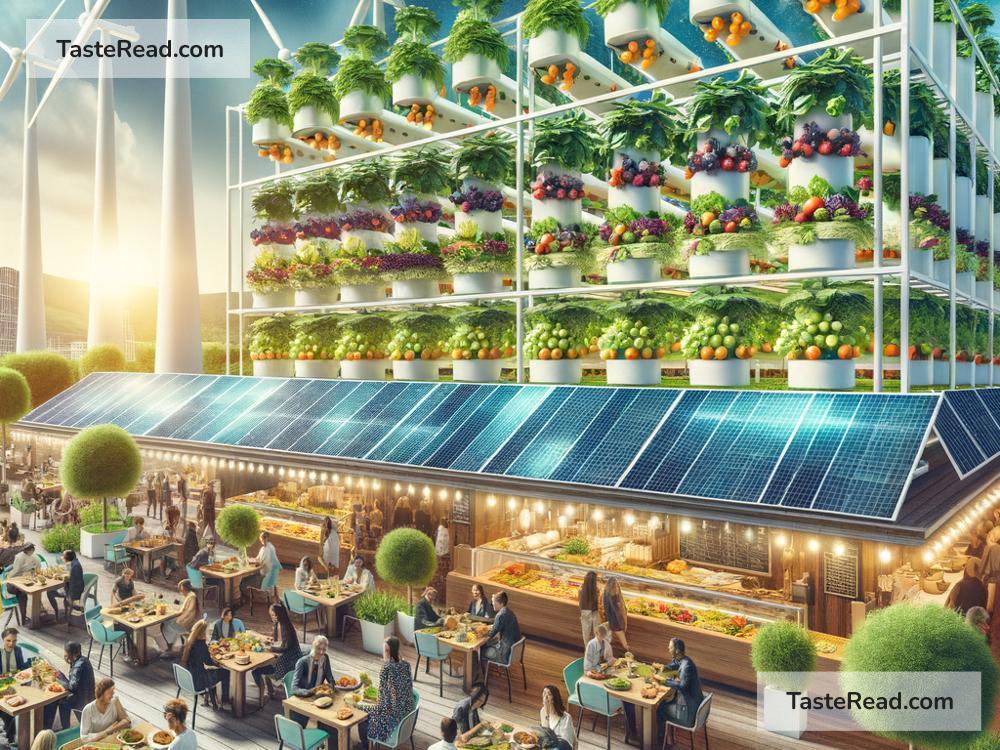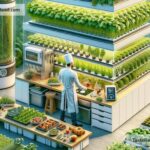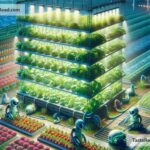The Future of Food and Energy Efficiency: A Path to Sustainability
As the world continues to grow, with more people and new challenges, two things become very important: how we produce food and how we use energy. Food keeps us alive, and energy powers everything we do–from lighting our homes to transporting goods around the globe. But both industries face serious challenges in the coming years. Climate change, a rising population, and limited resources are pushing us to rethink how we grow, process, and consume food, as well as how we generate and use energy. The future of food and energy efficiency is about finding smarter, greener, and more sustainable solutions.
The Future of Food: Feeding a Growing Population
By the year 2050, the global population is expected to rise to nearly 10 billion people. That means we will need to produce even more food to keep everyone fed. But increasing food production isn’t as simple as planting more crops or raising more livestock. Modern agriculture already takes up a lot of land, uses huge amounts of water, and creates greenhouse gases that contribute to climate change. So, how can we produce more food without harming the planet?
Precision Farming
One exciting solution is precision farming, which uses technology like GPS, drones, and sensors to make farming more efficient. Farmers can use these tools to know exactly how much water, fertilizer, or pesticides each part of their fields needs—reducing waste and improving yield. By optimizing resources, farmers can grow more food with less impact on the environment.
Vertical Farming
Another innovation is vertical farming. This method involves growing crops in stacked layers, often indoors under LED lights. Vertical farms use far less water than traditional agriculture, don’t need pesticides, and can grow food year-round in controlled environments. Plus, these farms can be located in cities, closer to the people who eat the food, reducing transportation costs and emissions.
Lab-Grown Meat
Meat production has a big environmental cost—using a lot of land, water, and energy while also producing greenhouse gases. Scientists are working on lab-grown meat, which is made from animal cells in a laboratory instead of raising animals on farms. This could provide the same taste and nutrition as traditional meat without harming animals or the environment.
Food Waste Reduction
Believe it or not, about one-third of all food produced globally is wasted. That’s a huge problem! In the future, technology can help minimize waste. Apps that connect restaurants and grocery stores with people who want surplus food, better storage solutions, and improved logistics can ensure food doesn’t end up in the trash.
The Future of Energy Efficiency: Doing More With Less
At the same time, how we use energy needs to become smarter if we want a sustainable future. Today, much of the world’s energy comes from fossil fuels like coal, oil, and natural gas. These resources are limited and contribute to pollution and climate change. But better energy efficiency—using less energy to get the same result—can help us use what we have more wisely, save money, and protect the planet.
Smart Grids and Smart Homes
One way we’re improving energy efficiency is with smart grids and smart homes. Smart grids use advanced technology to manage electricity distribution and reduce waste by directing power only where and when it’s needed. On the other hand, smart homes use devices like programmable thermostats, energy-efficient appliances, and lighting systems that adapt to your habits. For example, lights can automatically turn off when you leave a room, saving electricity.
Renewable Energy
The future also relies heavily on renewable energy sources like solar panels, wind turbines, and hydropower. These technologies create energy from natural resources that never run out, like sunlight and wind. In recent years, renewable energy has become cheaper and more reliable, and newer innovations promise even greater efficiency. Imagine homes powered entirely by rooftop solar panels, or cities where wind turbines produce enough electricity for everyone.
Electric Vehicles
Transportation is another area where energy efficiency is rapidly improving. Electric vehicles (EVs) are becoming more popular because they use batteries instead of gasoline, producing zero emissions. With advances in battery technology, EVs will be able to travel longer distances on a single charge, making them even more practical for everyday use. Some countries are even planning to phase out gasoline-powered cars entirely in the next few decades.
Energy Storage
A critical piece of the energy puzzle is storage. Renewable energy sources like solar and wind don’t always produce power consistently—solar panels don’t work at night, and turbines need wind. That’s why better energy storage systems, like advanced batteries, are key to making renewable energy reliable and efficient.
Working Together for a Better Future
The future of food and energy efficiency isn’t just about cool technology—it’s about how we work together as a global community to solve big problems. Governments can create policies to support sustainable practices, companies can invest in research and innovation, and people like you and me can make small changes in our daily lives to use less energy, waste less food, and support eco-friendly practices.
From lab-grown meat to smart homes, these innovations show us that we can meet the challenges ahead in a way that protects both people and the planet. The key is to act today and invest in sustainable solutions for tomorrow. It’s clear that the future of food and energy efficiency is bright—and it’s up to all of us to help it happen.


